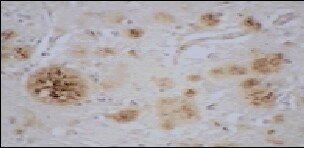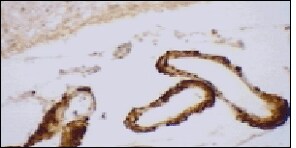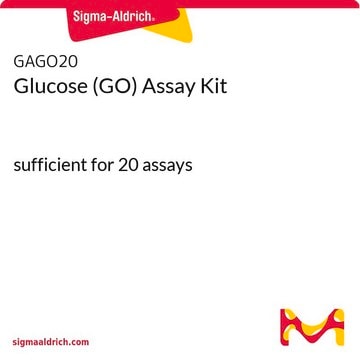NE1004
Anty-Apolipoproteina E mysie mAb (E6D7)
liquid, clone E6D7, Calbiochem®
Synonim(y):
Anty-ApoE
Wybierz wielkość
Wybierz wielkość
About This Item
Polecane produkty
pochodzenie biologiczne
mouse
Poziom jakości
forma przeciwciała
culture supernatant
rodzaj przeciwciała
primary antibodies
klon
E6D7, monoclonal
Formularz
liquid
nie zawiera
preservative
reaktywność gatunkowa
human
spodziewany brak reakcji z
mouse, rabbit
producent / nazwa handlowa
Calbiochem®
warunki przechowywania
OK to freeze
avoid repeated freeze/thaw cycles
izotyp
IgG1
Warunki transportu
wet ice
temp. przechowywania
−20°C
docelowa modyfikacja potranslacyjna
unmodified
informacje o genach
human ... APOE(348)
Opis ogólny
Immunogen
Zastosowanie



ELISA (patrz komentarze)
Immunoblotting (1:100-1:1000)
Immunoprecypitacja (patrz komentarze)
Skrawki mrożone (1:100-1:10,000)
Skrawki parafinowe (1:100-1:10,000, wymagany kwas mrówkowy lub obróbka cieplna)
Opakowanie
Ostrzeżenie
Postać fizyczna
Rekonstytucja
Komentarz do analizy
Tkanka mózgowa, surowica
Inne uwagi
Informacje prawne
Nie możesz znaleźć właściwego produktu?
Wypróbuj nasz Narzędzie selektora produktów.
Kod klasy składowania
11 - Combustible Solids
Klasa zagrożenia wodnego (WGK)
WGK 1
Temperatura zapłonu (°F)
Not applicable
Temperatura zapłonu (°C)
Not applicable
Certyfikaty analizy (CoA)
Poszukaj Certyfikaty analizy (CoA), wpisując numer partii/serii produktów. Numery serii i partii można znaleźć na etykiecie produktu po słowach „seria” lub „partia”.
Masz już ten produkt?
Dokumenty związane z niedawno zakupionymi produktami zostały zamieszczone w Bibliotece dokumentów.
Active Filters
Nasz zespół naukowców ma doświadczenie we wszystkich obszarach badań, w tym w naukach przyrodniczych, materiałoznawstwie, syntezie chemicznej, chromatografii, analityce i wielu innych dziedzinach.
Skontaktuj się z zespołem ds. pomocy technicznej



![2-Deoxy-2-[(7-nitro-2,1,3-benzoxadiazol-4-yl)amino]-D-glucose ≥97% (HPLC)](/deepweb/assets/sigmaaldrich/product/structures/104/527/40bd5a41-ebc4-484e-a10e-891fecfaea79/640/40bd5a41-ebc4-484e-a10e-891fecfaea79.png)